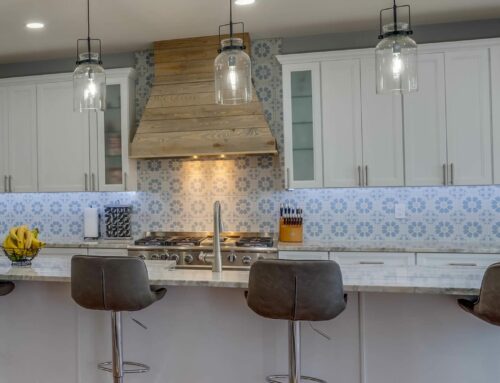There are many things on your plate when you do a kitchen upgrade. You need to pick out the right kitchen countertops, cabinets, new appliances, paint, and a million other things. One of the things that tend to fly under the radar is the kitchen outlets. It may seem pointless, but there are reasons for these rules. You need to follow the code to make sure your kitchen will pass inspection. This is very important for your safety as well as convenience. It is even more important if you are renovating your kitchen hoping to sell your house at a better price. A reliable remodeling contractor will advise you about the electrical code. However, you should know the basics when planning a kitchen upgrade.
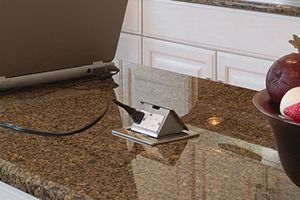
GCFI
All kitchens have small appliances. This is why you need to make sure you have more than enough outlets to plug in a coffee machine, toaster, blender, and the like. The code requires that you have two or more ground fault circuit interrupter or GCFI-protected circuit breakers for the countertop and other work areas. How many will depend on the coverage area. GCFI circuit breakers track the flow of electricity to outlets for leaks that can lead to a nasty shock if you touch them. The GCFI stops the flow of electricity when it detects these leaks to protect you and your appliances. It has a test and reset button you should check regularly. Each GCFI-protected receptacle should get its supply from 20-amp 120-volt circuits. This means you can put in a number of outlets from each receptacle, suitable for use with most of these appliances without blowing it out. Putting in enough outlets means you will not have to use extension cords.
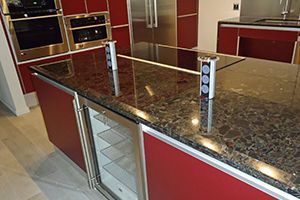
Area requirements
If you are like most kitchen users, you probably have quite a few small appliances in a small area. Because of this tendency, the code requires a GCFI receptacle to service each 12-inch section of a countertop or work area. This is to ensure you have enough power for a blender and coffee maker, both power-hungry appliances, running at the same time. You can choose to put GCFI outlets instead of receptacles, but GCFI outlets tend to be a bit bulky.
Note: The maximum distance between countertop GCFI outlets is 48 inches.
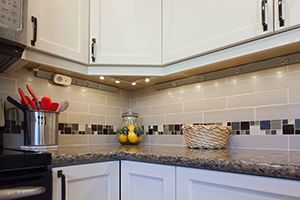
Non-GCFI outlets
Some things you have in your kitchen require a power source that should not be GCFI-protected. However, the code requires these to be dedicated. Dedicated lines ensure the appliance gets the power it needs to operate without overloading. This means it will not trip accidentally and cut off power to the rest of the kitchen. This is also the reason for it not being GCFI.
? Dishwasher – The code requires you to provide a dedicated line with 15 amps at 120 volts. It should have a 14/2 cable, which is standard for delivering 15 amps.
? Garbage disposal ? This has the same specifications as for a dishwasher.
? Microwave – You need a bit more power for this appliance. The code requires you to provide a dedicated line with 20 amps at 120 volts. It should have a 12/2 cable, which is standard for delivering 20 amps.
? Electric range ? You need even more power for this one. The code specifies a dedicated line delivering 50 amps of 120/240 volts. You need a different type of cable for 240V. This usually means a larger cable with a double pole circuit breaker.
? Refrigerator – You do not want a GCFI outlet for refrigerators in particular because tripping can be a problem when the power fluctuates a little. You have to reset it to turn your refrigerator back on. The thing is, if you are out for the weekend and the GCFI trips, all your food will spoil. The outlet should deliver 20 amps at 120 volts.
Note: If you have a refrigerator in a garage or unfinished basement, the code requires you to put in a GCFI outlet.
? Lights ? You do not need a big power source for all your lights in a typical kitchen. In fact, you only need one circuit to supply all of them. It should supply 15 amps at 120 volts. Of course, if you have a huge kitchen, you can add another circuit to supply lights to some parts of the house, or use a circuit with higher amperage.
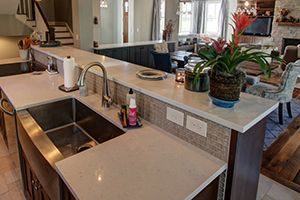
Safety requirements
The code requires all outlets to be tamper-resistant. These outlets have a type of shield that requires two prongs pushed in with significant force to let the electricity flow. This is to prevent curious children from exploring the interesting notches on the walls with their little fingers and getting an electric shock.
Conclusion
Electric outlets are a necessity in the kitchen, but they do not get the proper attention during a kitchen upgrade. Knowing the code requirements will help you choose the right contractor to help you with your kitchen remodeling project. Mimosa Kitchen and Bath knows all about these electrical code requirements, so you are in good hands. Aside from that, Mimosa is a full service remodeler, so you can rely on us for your kitchen upgrade. We sell a host of other products, which include bathroom and kitchen cabinets, flooring, faucets and sinks, and vanities. Some of the brands we carry include Zodiaq, Fabuwood, Forevermark Cabinetry, Caesarstone, MSI, Kitchenmaid, Wolf Cabinets, Cambria and Hardware Resources. We sell high-quality products manufactured by leading brands in the industry and expert remodeling services. When you purchase your products from us, you are guaranteed a speedy delivery compared to ordering from big box stores. Our contractors will fabricate the product and install it into your kitchen quickly and with excellent artisanship. We service the DC metro area, Columbia, Rockville, Bethesda, Jessup, Chevy Chase and surrounding areas. You can visit our showroom in Ellicott City, Maryland to see the many products and stone slabs we have available. This includes marble, granite and engineered quartz. All of our products come backed with brand warranties.
Contact us today to get a free quote for your kitchen remodeling project!



